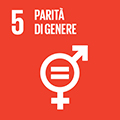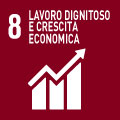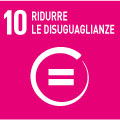- Docente: Giuseppe Losacco
- Crediti formativi: 4
- SSD: SPS/08
- Lingua di insegnamento: Inglese
- Modalità didattica: Convenzionale - Lezioni in presenza
- Campus: Bologna
- Corso: Laurea Magistrale in Sociologia e servizio sociale (cod. 8786)
-
dal 17/09/2024 al 03/12/2024
Conoscenze e abilità da conseguire
Obiettivi formativi dell’insegnamento: This course is based on the sociological analysis of some films produced in Italy from the end of World War II to the ‘80 with the aim of to use Italian movies as telescopes on the past and to reflect on the present of Italian culture, from both the historical and social point of view. At the end of the course, students will have a knowledge about: • Italian cinema from the beginning of the twentieth century to the 1980s • political and social transformations from the early 1900s to the 1980s • elements of Italian history from 1900 to post-war period • notions on sociological and anthropological models, necessary to interpret social transformations in Italy in the analyzed period
Contenuti
This course is based on the vision and the analysis of films made in Italy from the end of World War II to the ‘80. We will see some of the most important movies of the Italian film history (i.e. "900" “Rome open city”, " La dolce vita" “Bread and chocolate” etc..). The aim of the course is to use these films as telescopes on the past and to reflect on the present of Italian culture, from both the historical and social point of view. In other words, this is a sociology course on Italian culture, where movies are used as data as well as a stimulus for the debate. In addition, another level of analysis will concern the styles, the schools and the directors of the shown films, and the technical and social contexts that influence the different styles. In this step, we will consider the mass communication linguistic techniques (figures of speech, metaphors, analogies), to identify both clear and hidden messages in movies.
Testi/Bibliografia
A history of Italian cinema / Peter Bondanella and Federico Pacchioni, Bloomsbury Publishing. Wydawca pbl, 2017
Metodi didattici
frontal lessons and viewing of selected films
Modalità di verifica e valutazione dell'apprendimento
Written report ( at least 10,000 characters including spaces) attending students (70% attendance required), oral test for not attending
For attending students (attendance of at least 7 lessons of 10 ) it is sufficient to pass the final exam to use the material made available on the web (access with password), the notes taken in class, and the reading of the material related to the films analyzed during the course that will be provided by the teacher.
For non-attending students, the exam will be carried out on the basis of the following chapters of the following book:
Peter Bondanella and Federico Pacchioni , A History of Italian Cinema, 2nd edition, Bloomsbury Academic - 2017
Chapters:
2. Industry and Ideology: The Talkies during the Fascist Era
3. Neorealism: A Revolutionary and Problematic?New Film Aesthetic
4. Neorealism's Many Faces: Widening the Range of the Camera's Eye
5. The Cinema of the Reconstruction and the Return of Melodrama
7. Commedia all'italiana : Social Criticism for Laughter's Sake
8. The Italian Art Film: Auteurism in Visconti, Antonioni, Fellini, and De Sica
9. Neorealism's Legacy to a New Generation, and the Italian Political film
10. Myth, Marx, and Freud in Pier Paolo Pasolini and Bernardo Bertolucci
14. The Poliziesco: Italian Crime Films from the 1970s to the Present
N.B .: Access to the material on the web is only for attending students, as it is useful material only if integrated with the lectures, and it is necessary to pass the written exam that will take place on a single date after the end of the course. The written exam is reserved only for attending students
Strumenti a supporto della didattica
Using audiovisual during class
Orario di ricevimento
Consulta il sito web di Giuseppe Losacco
SDGs




L'insegnamento contribuisce al perseguimento degli Obiettivi di Sviluppo Sostenibile dell'Agenda 2030 dell'ONU.
